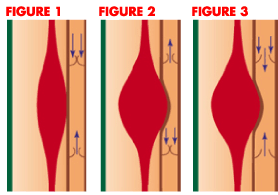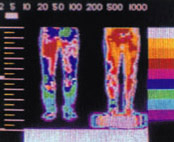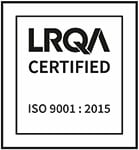The Science of Standing
The Circulatory System
An expanding body of research exists which addresses standing work positions and the potential damage. The general conclusion of this research is that floor mats are an important element in injury prevention efforts.
Blood flows from the heart through the arteries to the extremities. When you walk, it is pumped back through the veins by the interaction between muscles and veins. This mechanism is commonly referred to as the venous pump. When you stand, gravity will make fluids settle in feet and legs and because of the reduced muscle activity, the venous pump is less effective. This causes increased pressure on the walls of the veins, which leads to long-term damage and swelling which causes pain and discomfort.
How the Venous Pump Works

Figure 1 shows a muscle (in red) at rest next to a vein. Flapper valves in the vein allow blood to flow up from below but not down from above (illustrated by the arrows). In Figure 2, the muscle contacts and exerts pressure on the side of the vein. This causes blood to flow up through the valve above while the valve below remains closed ensuring proper circulation towards the heart.
Damaged Veins
Prolonged standing on a hard surface will lead to damaged veins. This damage occurs as pressure inside the veins builds up and expands the sides of the veins. As the years go by, the vein becomes permanently expanded and the flaps that make up the valves are no longer able to reach together.
The Anti-Fatigue Mat Advantage

Anti-fatigue mats were developed specifically to solve the problems of short-term fatigue and long-term injury associated with standing work positions. Our product line represents the most advanced technology for this purpose available in the marketplace today.
By providing an elastic surface to stand on, an Anti-fatigue mats stimulates muscle activity in feet and legs. As described above, this is important for the proper function of the venous pump and hence for the prevention of fatigue and injury.
This thermal photograph compares circulation in the lower body of a standing worker. The image on the right shows the worker standing on an anti-fatigue. Red and yellow tones indicate higher skin temperatures resulting from stimulated muscle activity and hence circulation in the legs and feet, promoted by the anti-fatigue mat's unique elastic properties. The image on the left shows circulation patterns without the anti-fatigue. Blues and greens in this image are evidence of poor circulation, a reliable predictor of fatigue and muscle disorders.

